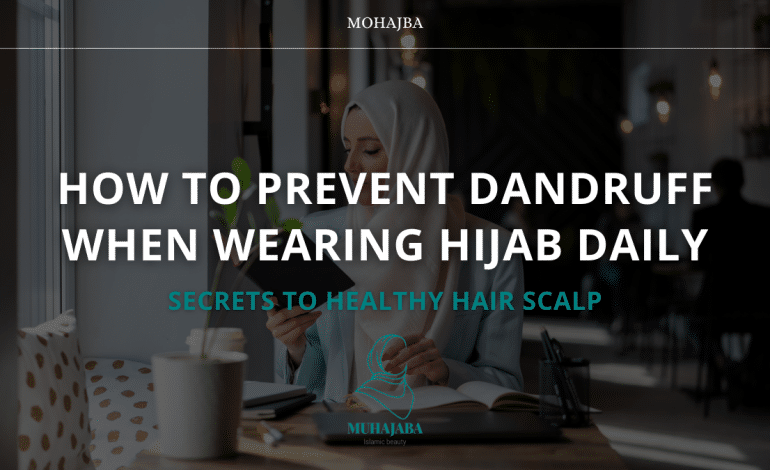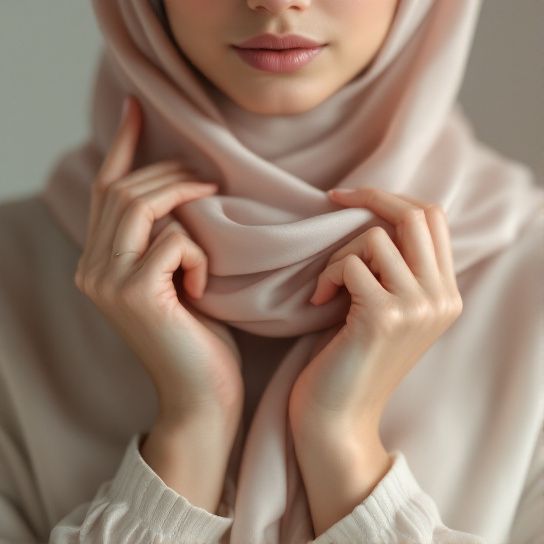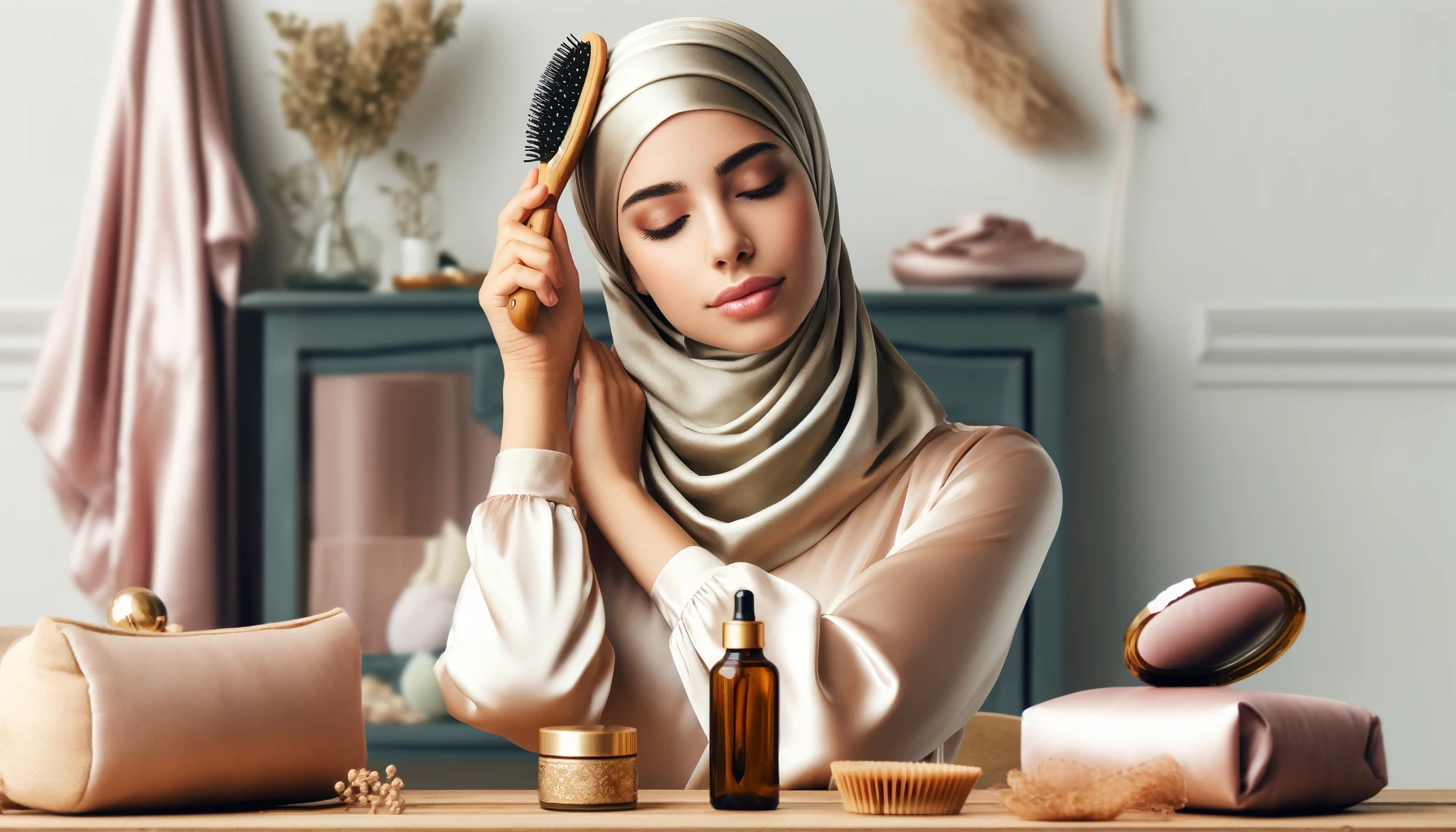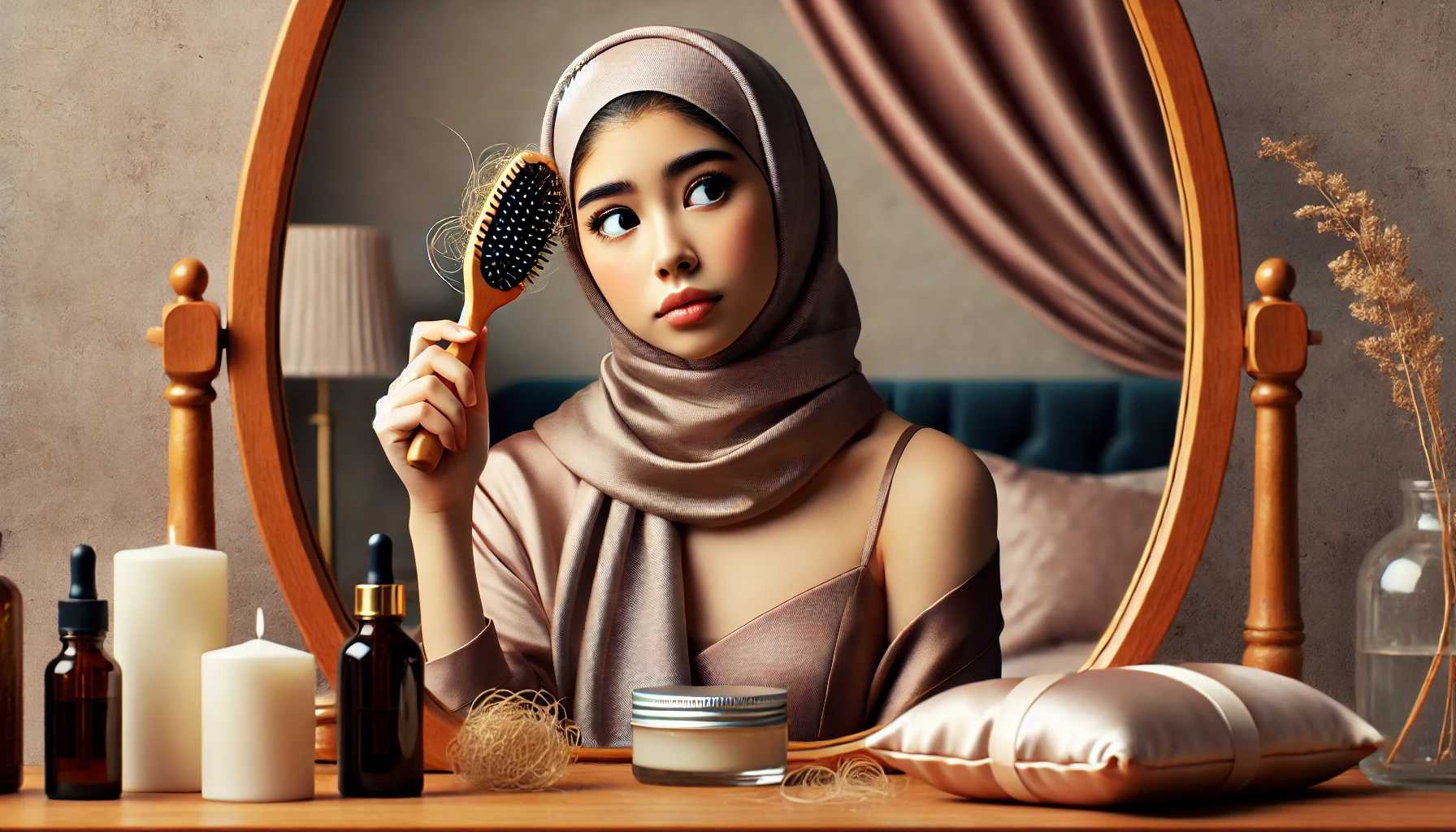How to Prevent Dandruff When Wearing Hijab Daily

If you wear the hijab every day and struggle with dandruff, you’re not alone. That annoying white flake situation? Totally normal — but definitely not something you have to live with.
The truth is, wearing the hijab for long hours can trap heat, sweat, and oil, which disrupts scalp balance and leads to itchiness, flakes, and even fungal growth.
But with a few simple changes to your routine, you can ditch dandruff for good — without compromising your hijab lifestyle.
Here’s your go-to guide for preventing dandruff under the hijab and keeping your scalp clean, calm, and flake-free.
🧕 Why Hijabis Are More Prone to Dandruff
When your hair is constantly covered:
- Your scalp gets less airflow
- Sweat and oil can build up
- Humidity under layers can lead to fungal overgrowth
- Using the same tight bun or underscarf daily can create hotspots for irritation
This doesn’t mean hijab causes dandruff — but without the right scalp care, it can definitely make it worse.
🌿 7 Scalp-Saving Tips to Prevent Dandruff for Hijabis
✅ 1. Wash Your Hair Regularly (But Not Too Often)
Aim to wash your hair 1–2 times per week with a gentle, sulfate-free anti-dandruff shampoo. Overwashing strips natural oils and triggers more flaking.
💡 Pro Tip: Look for shampoos with tea tree oil, ketoconazole, or salicylic acid to target dandruff without irritating your scalp.
✅ 2. Let Hair Dry Completely Before Wearing Hijab
Never wear your hijab over damp hair. Trapped moisture is the #1 cause of dandruff and can even lead to scalp fungus.
💡 Pro Tip: Use a microfiber towel and let your hair fully air dry before covering.
✅ 3. Exfoliate Your Scalp Weekly
Use a gentle scalp scrub or DIY exfoliant (like brown sugar + coconut oil) once a week to remove dead skin and buildup.
This helps keep pores clean and prevents flakes from forming.
✅ 4. Switch to Breathable Underscarves
Choose cotton or bamboo underscarves that absorb sweat and allow ventilation. Avoid polyester or synthetic blends that trap heat and bacteria.
✅ 5. Incorporate Natural Oils
Apply light oils like:
- Tea tree oil (antifungal & soothing)
- Jojoba oil (balances sebum production)
- Aloe vera gel (hydrates and calms irritation)
💡 Use these once a week before showering as a pre-shampoo treatment.
✅ 6. Avoid Tight Styles Daily
Constantly tying your hair the same way creates friction and traps sweat. Switch up your bun placement and avoid tying it too tight.
✅ 7. Wash Your Underscarves Frequently
Dirty underscarves hold sweat, oils, and bacteria — which can easily transfer back to your scalp. Wash after every 1–2 wears.
❓ Frequently Asked Questions
Q1: Can wearing the hijab cause dandruff?
A: Not directly, but covering damp hair, using unwashed underscarves, or tight styles can create an environment that triggers dandruff.
Q2: How often should I exfoliate my scalp?
A: Once a week is ideal. Over-exfoliation can irritate the scalp, but regular gentle scrubs help prevent buildup and flakes.
Q3: What’s the best natural remedy for dandruff under the hijab?
A: Tea tree oil diluted with a carrier oil (like coconut or jojoba) works wonders. Aloe vera gel is also great for calming itchy, flaky scalp.
✨ Final Thoughts
Your scalp deserves just as much care as your skin. With a few mindful adjustments — from the shampoo you use to the fabric of your underscarf — you can enjoy a flake-free, fresh scalp even with daily hijab wear.
Say goodbye to flakes and hello to comfort and confidence under the scarf.
📲 Stay Connected
Looking for more hijabi hair care secrets and natural scalp solutions?
👉 Follow us on social media for tips, tutorials, and real-life routines
👉 Visit www.mohajba.com for DIY remedies, expert product picks, and all things hijab-friendly hair care










